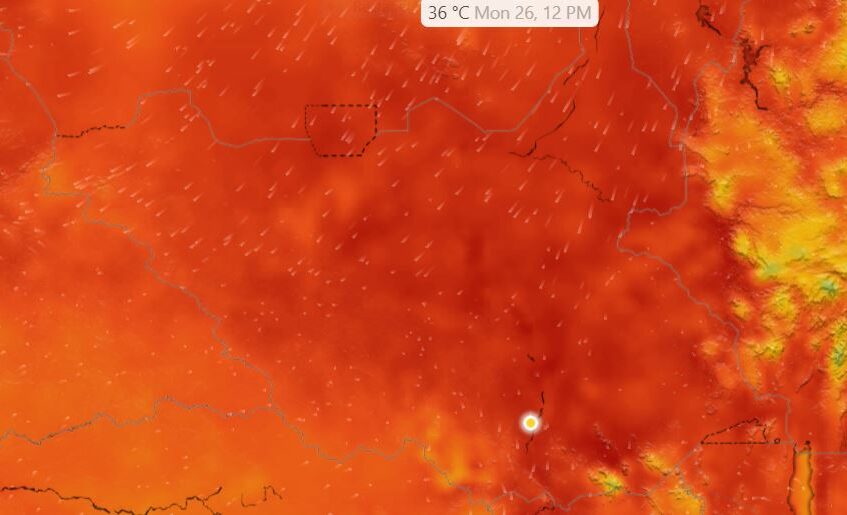
Google weather forecast. (-)
A South Sudanese meteorologist has projected continuous excessive heatwaves across the country up to the middle of March as the country approaches the rainy season.
Temperatures soared to 40-degree Celsius at mid-day on Friday and Saturday in different parts of South Sudan including Juba, and slightly dropped to 37-degree Celsius at midnights.
Juba residents and those in other parts of the country have taken to social media to complain about the unbearable heat.
Juma Ali Mohamed, the head of Weather Forecast Section of the Meteorology Department in South Sudan described the rising temperature as normal.
Meteorologist Mohamed states that the heat condition is as a result of increasing humidity that will lead to the formation of clouds and the coming of rain next month.
“The rise in temperature during this period is considered normal as the rainy season approaches in March, and with the increase in relative humidity, the temperature rises, forming clouds for rain to fall,” he said.
” Therefore, we will witness a continued rise in temperatures until March, the time of the rainy season.”
Juba has a typical tropical wet and dry climate under the Köppen climate classification. Situated near the equator, it boasts a combination of high temperatures and significant rainfall throughout the year.
Temperatures vary from 31.1°C (88°F) to 37.9°C (100.2°F). The lowest temperature recorded is 20°C (68°F) while the highest reaches up to 37.9°C (100.2°F).
Mr. Mohamed advises the public against movement in the sun to avoid exposure to heat, which could lead to several health problems including cancer.
The meteorological expert also encourages the government and public to plant trees to conserve the environment.
“I advise citizens to reduce movement after noon to avoid exposure to high temperatures and also to take shelter in trees as a temporary solution, but in the future, the government must plant many trees in the streets to help absorb the high temperatures.”
The rainy season in South Sudan begins in March and lasts through November.
On Thursday, the IGAD Climate Prediction and Applications Centre (ICPAC) predicted a higher probability of wetter-than-normal conditions in the upcoming March to May 2024, across most parts of the Greater Horn of Africa
ICPAC said in a press statement the countries expected to experience wetter conditions are Kenya, Somalia, southern Ethiopia, South Sudan, Uganda, Burundi, Rwanda, and north-western Tanzania.
The expected enhanced rainfall is likely to positively impact agriculture, water resources, and overall livelihoods, according to the center.
Support Eye Radio, the first independent radio broadcaster of news, information & entertainment in South Sudan.
Make a monthly or a one off contribution.
Copyright 2024. All rights reserved. Eye Radio is a product of Eye Media Limited.